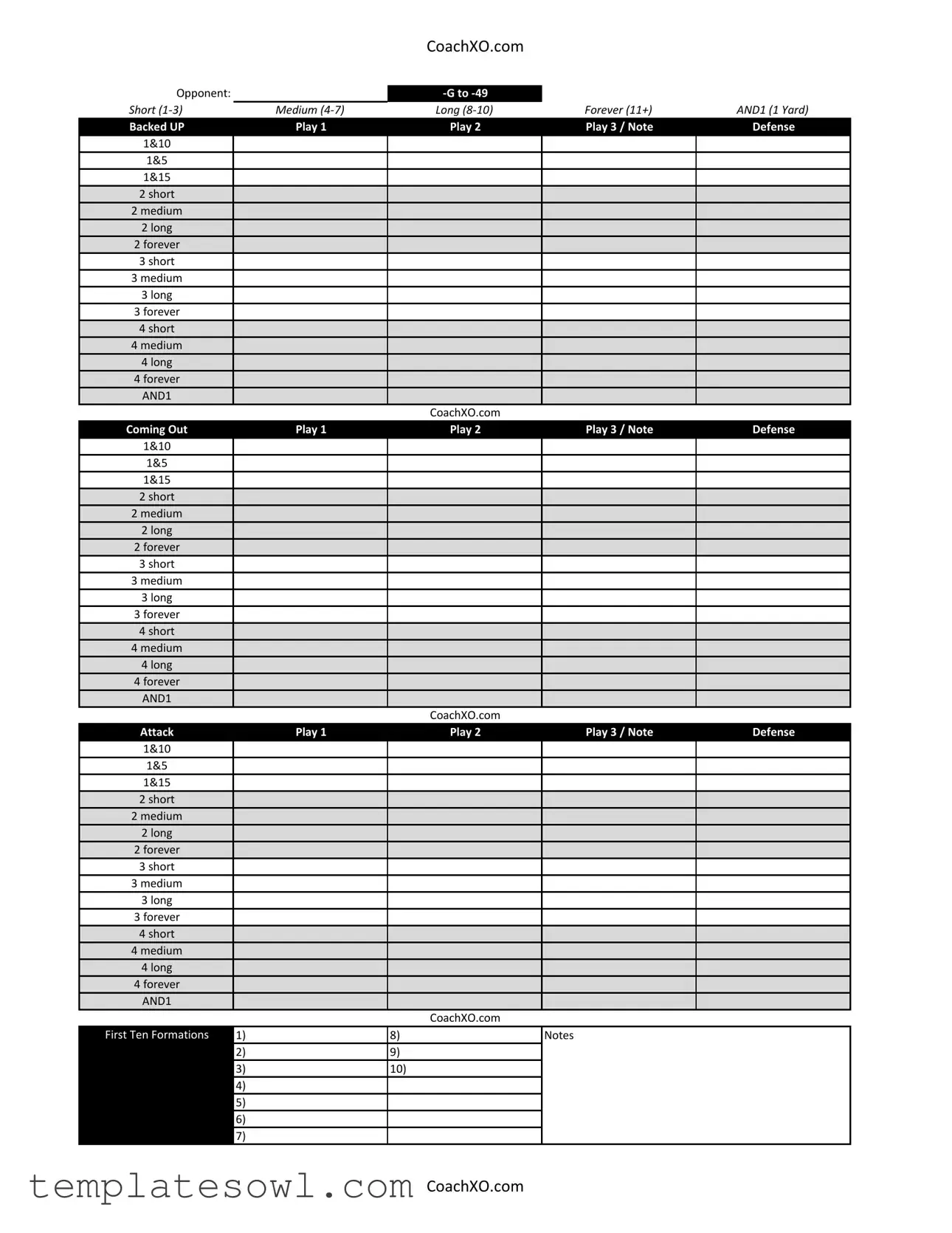What is the purpose of the Football Play Diagram form?
The Football Play Diagram form is designed to help coaches organize their plays during games or practice. It serves as a visual reference that allows for easy recording of different plays based on various game situations, such as down and distance. By using this form, coaches can strategize more effectively and provide clear instructions to their players.
How should I fill out the "Opponent" section?
The "Opponent" section allows you to indicate your opponent’s field position. You'll want to note whether they are positioned at their own 50-yard line or closer to your goal line. This information is critical in determining the type of plays you might want to call and helps with adjusting your strategy depending on the opponent's strength and field position.
What do the terms "Short," "Medium," and "Long" refer to in play distance?
"Short," "Medium," and "Long" refer to the yardage required for a first down. A "Short" play usually covers 1-3 yards, making it suitable for quick gains. "Medium" plays target 4-7 yards, while "Long" plays are aimed at achieving anywhere from 8-10 yards. Plays designated as "Forever" cover distances of 11 yards or more, ideal for more aggressive strategies or situations when you need a significant gain.
How can I track different plays in the form?
The form includes designated areas for you to label multiple plays from a given situation. For each type of play (Coming Out, Attack, Red Zone, and Goalline), you can note down three specific strategies. Each play should correspond to the respective down, distance, and opponent's defense being faced, allowing for a comprehensive playbook that is easy to reference during high-pressure game moments.
What is the significance of the "Notes" section?
The "Notes" section is invaluable for jotting down additional insights or observations. This could include notes on player performances, weather conditions, or adjustments based on the opposing team's tendencies. Having these notes accessible helps inform future strategy and play selection, tailoring your approach to maximize your team's strengths.
What should I consider when using the form in the Red Zone?
In the Red Zone, the focus shifts to high-scoring opportunities. When filling out the form for plays in this area, prioritize aggressive strategies that capitalize on limited space. Consider the push required from your offensive line, as well as the defensive alignment you're facing. This can be a critical moment in the game, so efficient communication and play selection are essential.
Are there specific strategies for overtime and two-point plays included in the form?
Yes, the form provides sections specifically for overtime and two-point plays. During overtime, the stakes are higher, and the right call can lead directly to victory. The two-point play section helps coaches plan for critical moments when attempting to secure extra points after a touchdown. These sections encourage coaches to think through their options and be prepared for unconventional situations that demand creativity and decisiveness.
